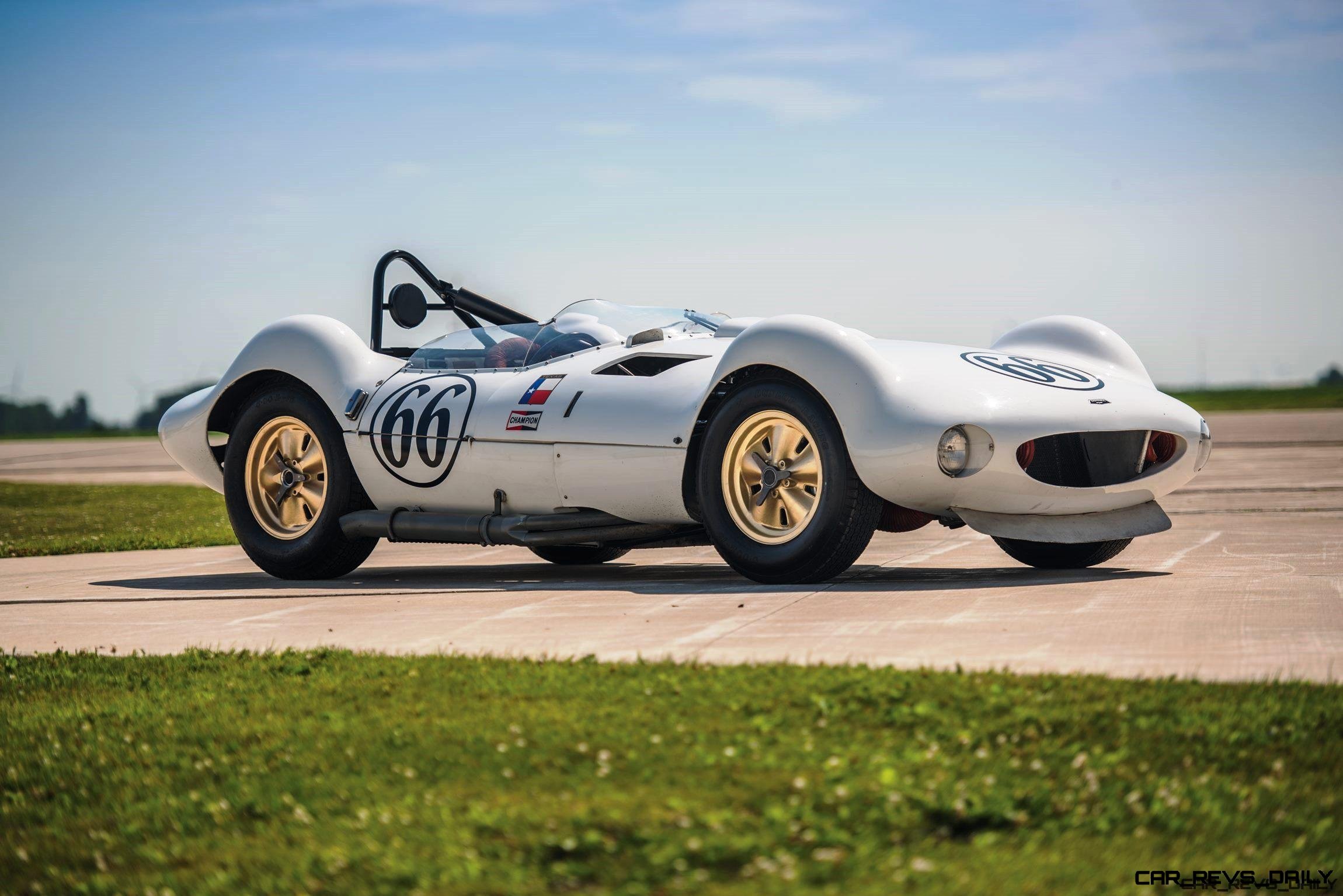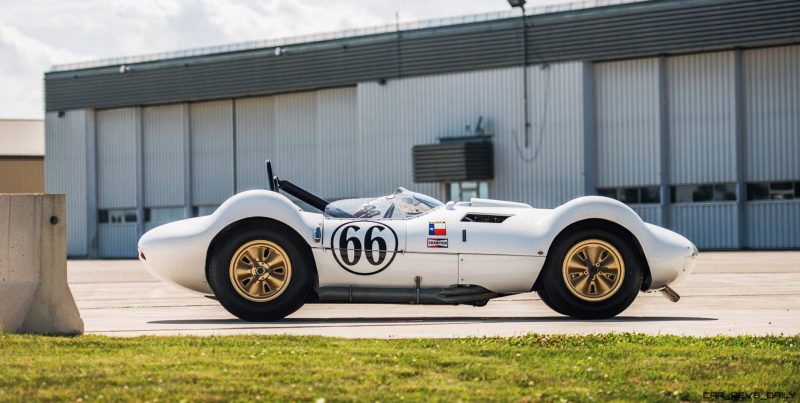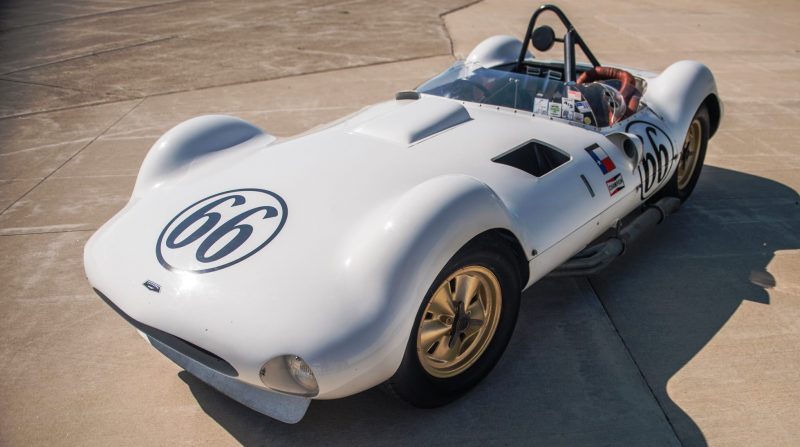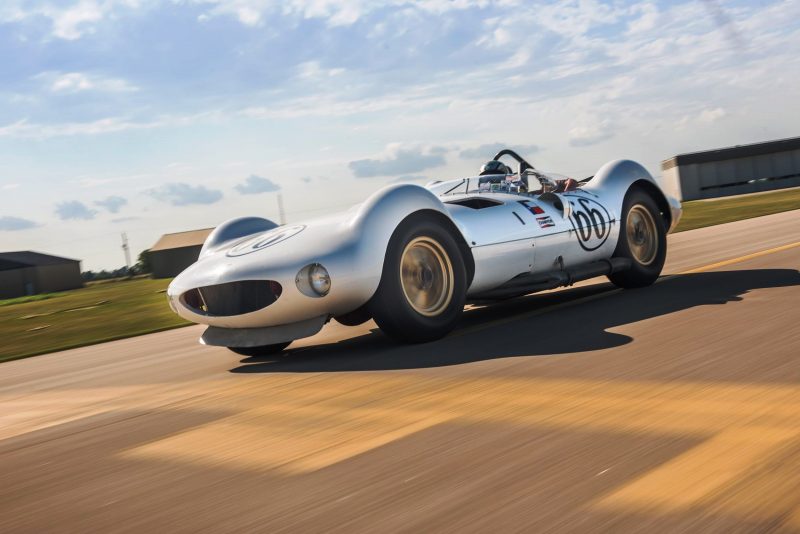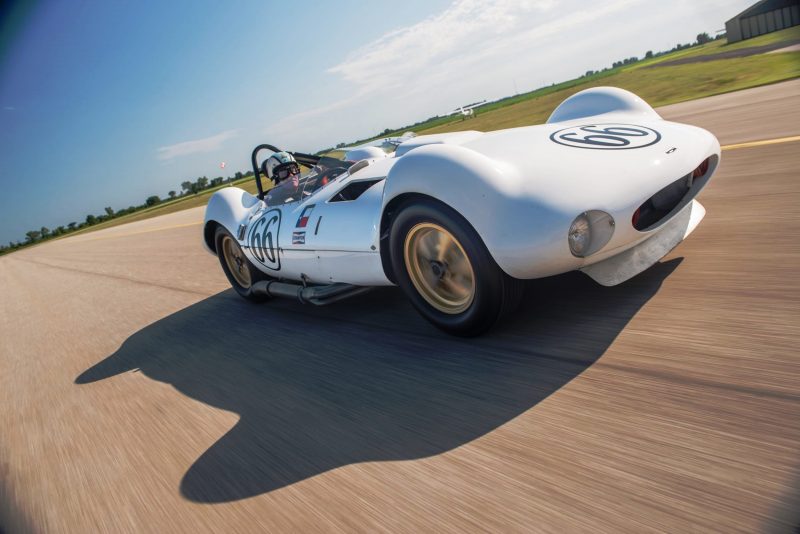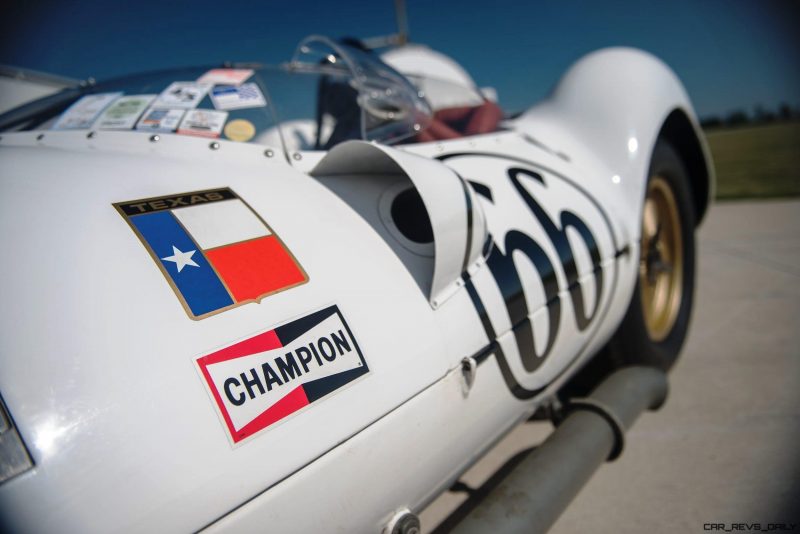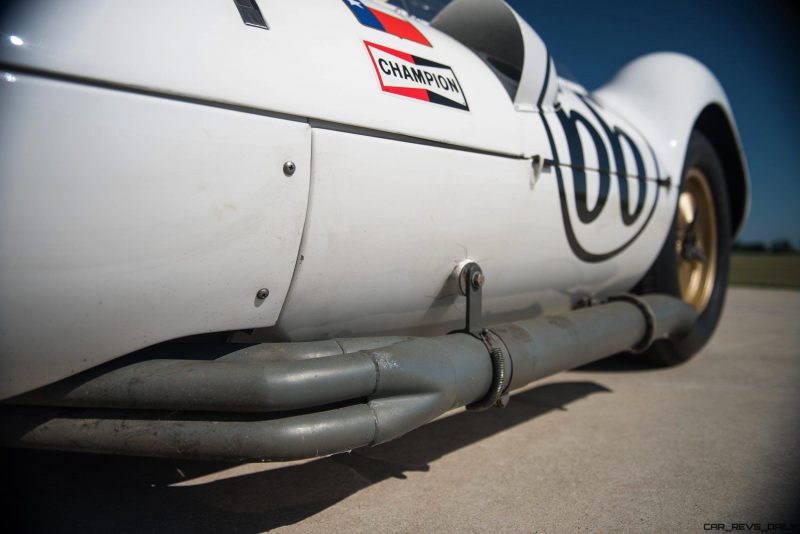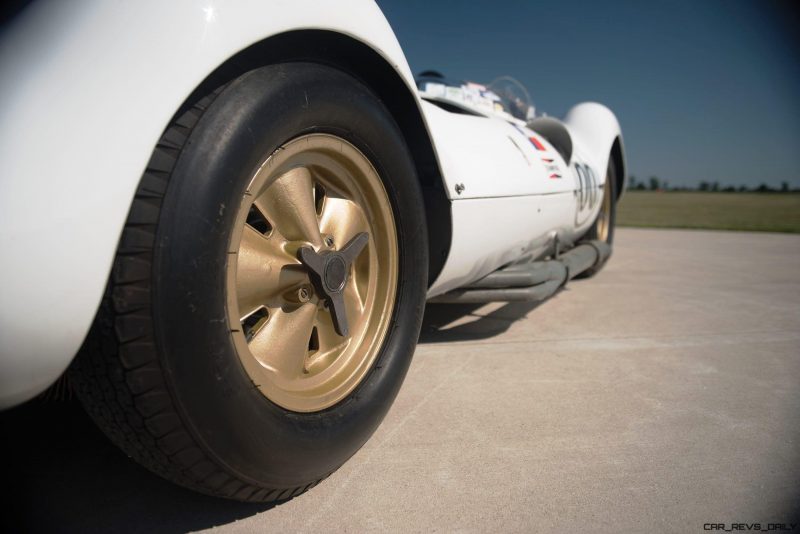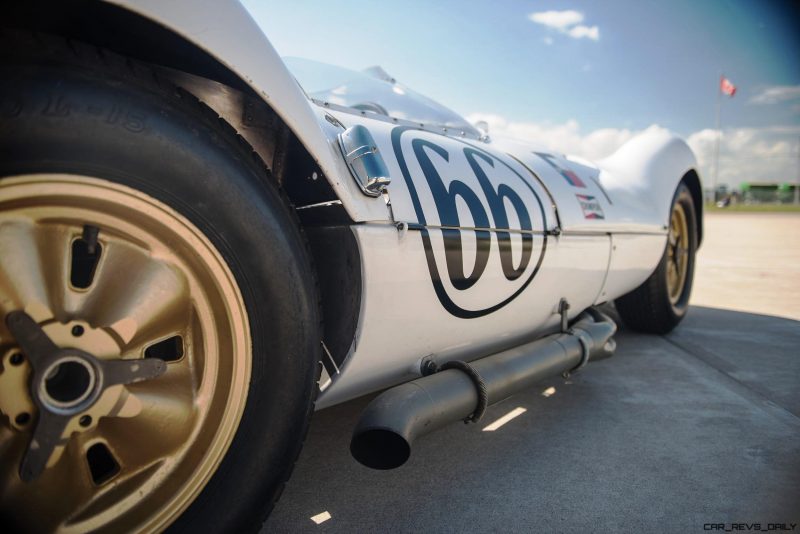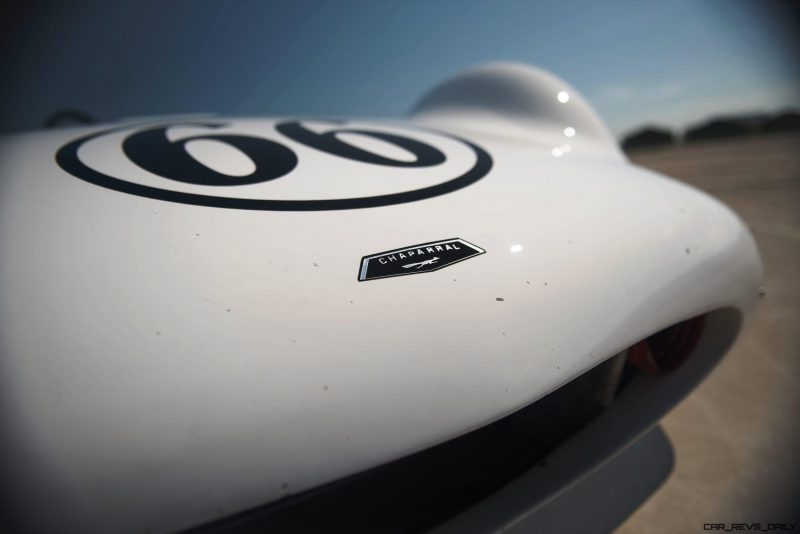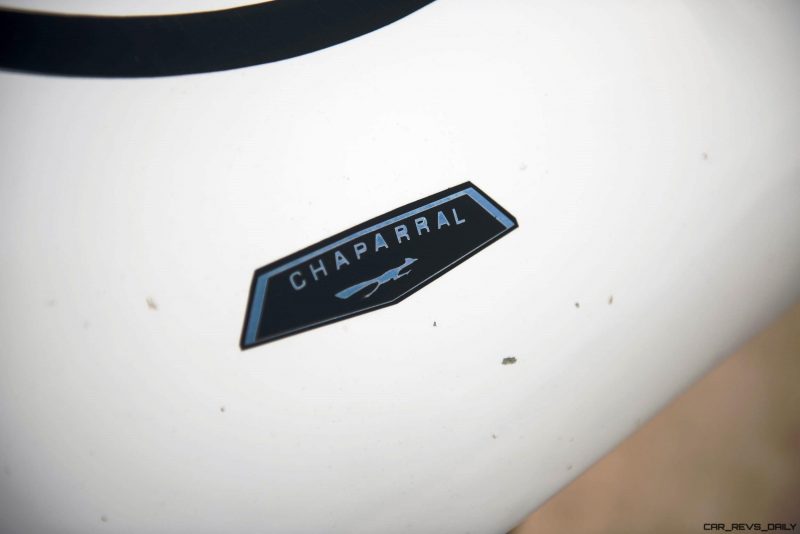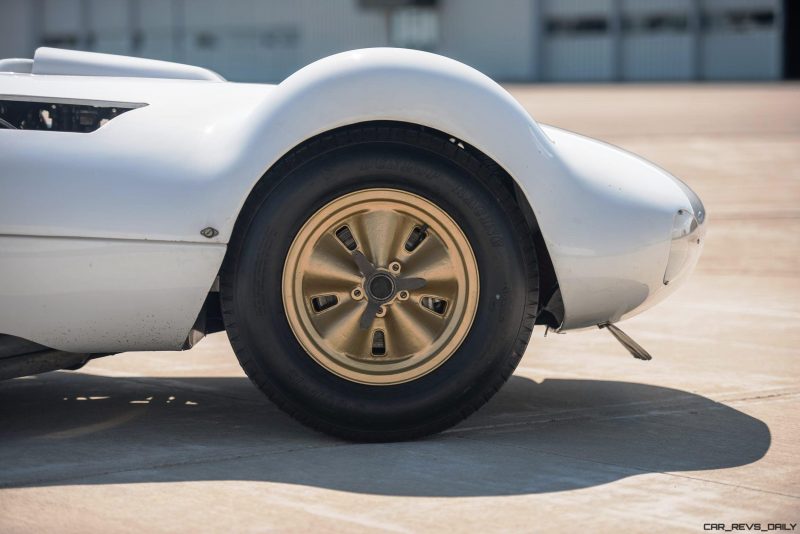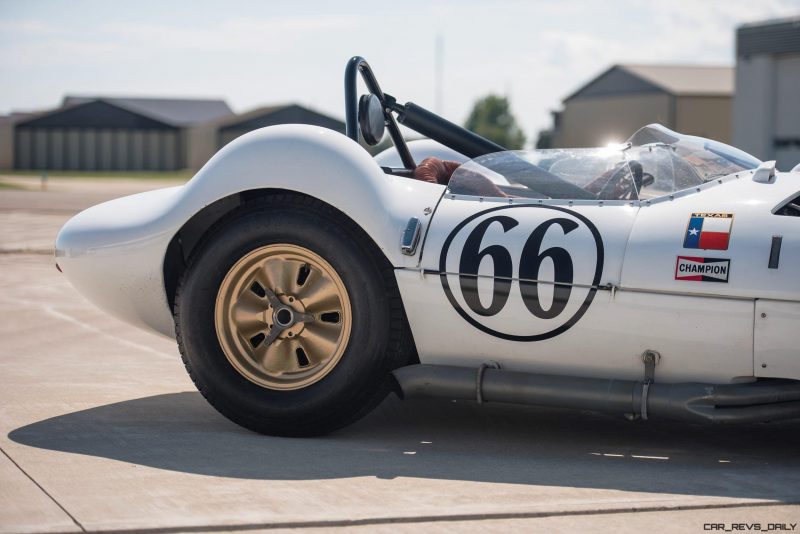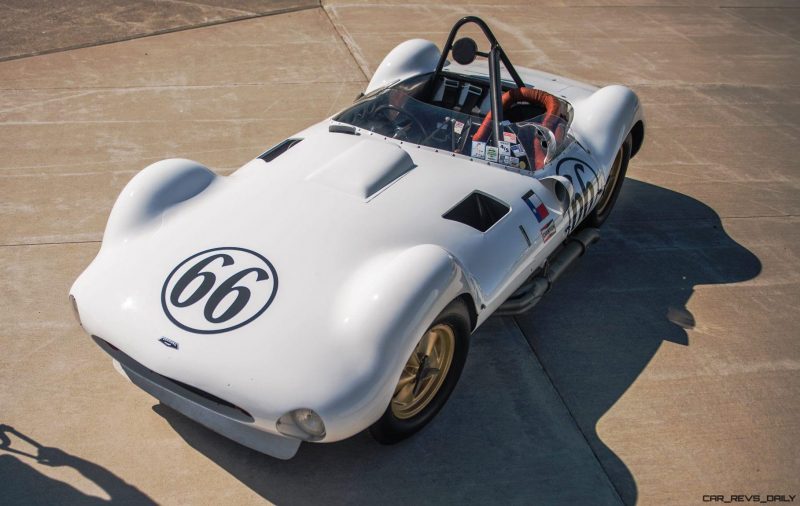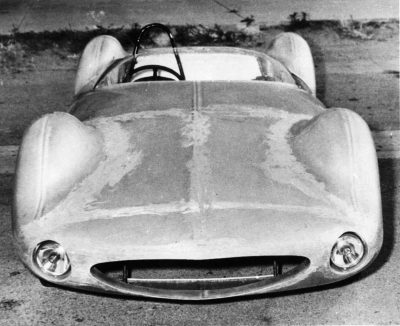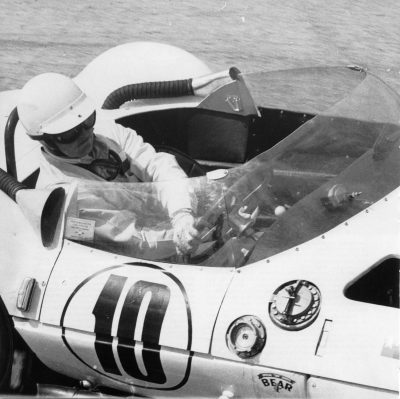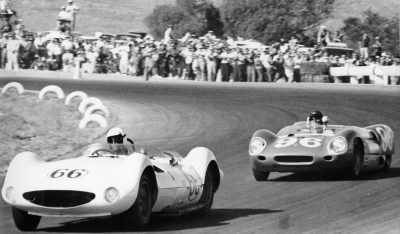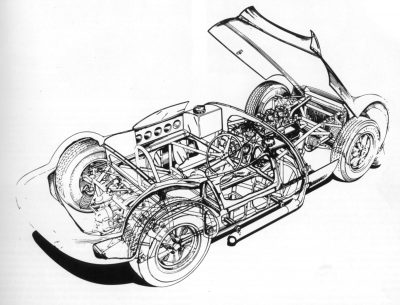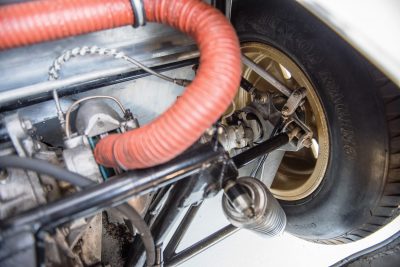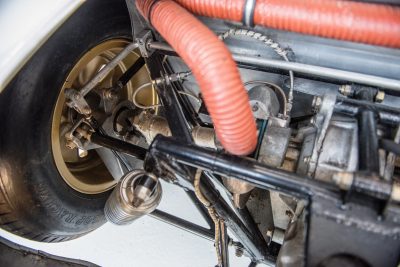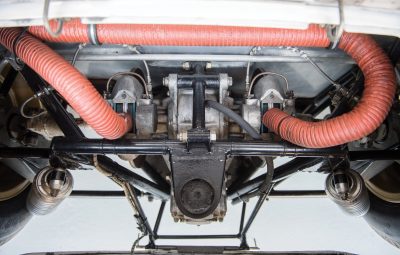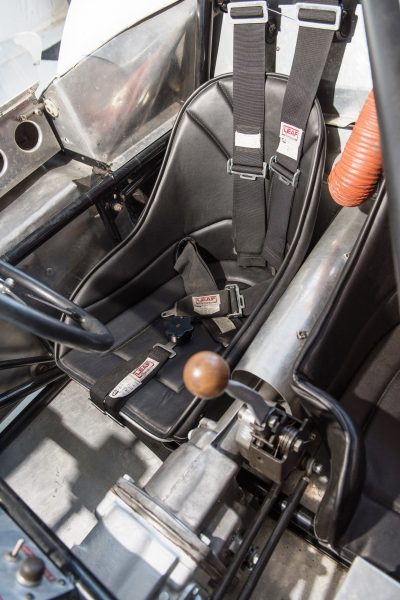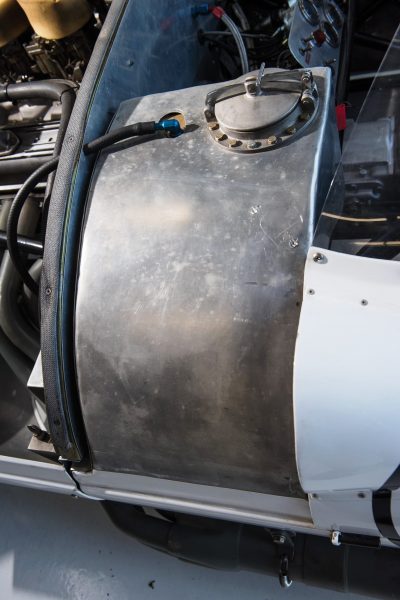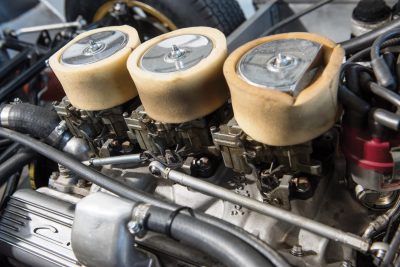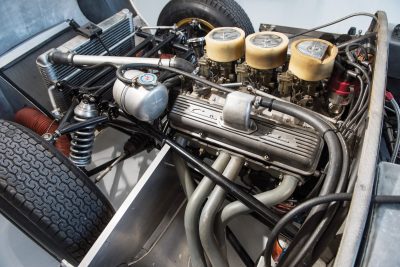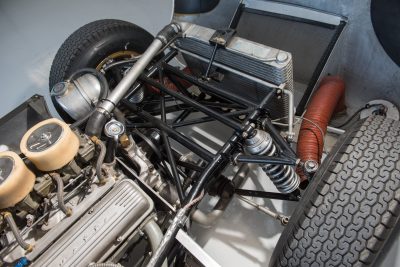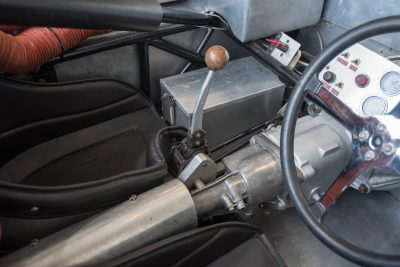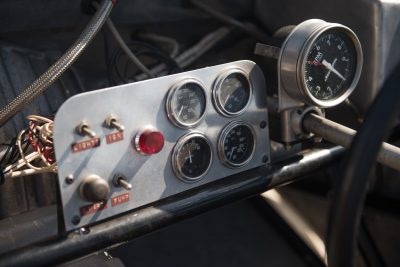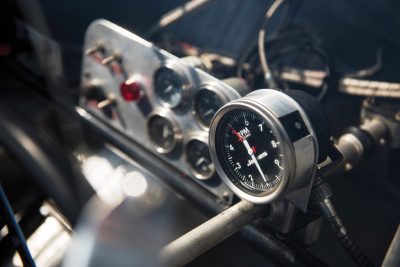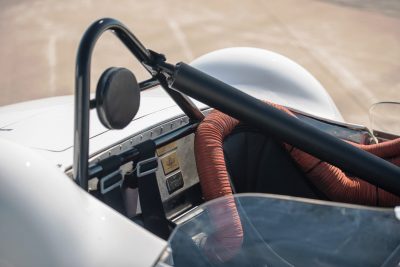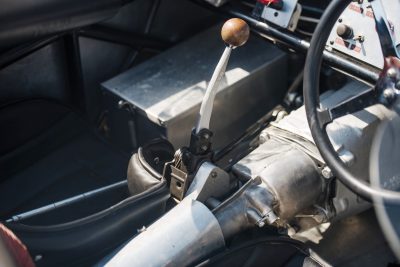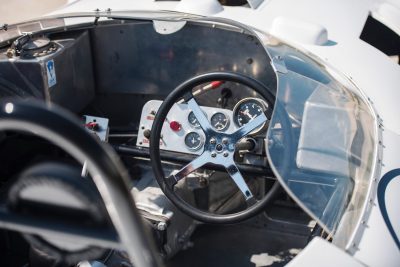Here is a car that might be one of the most important American racers of all time. Not for its winning record or legendary value… but simply for its rarity and inspired engineering clarity.
This was Chaparral’s answer to the Shelby Cobra, but faster and lighter and far more aerodynamic.
Looks like the Chaparral Prototype 1 was a no-sale in Monterey/Pebble Beach auctions this year, for unknown reasons. Perhaps just too much of an insiders-only type of machine versus the sure-to-appreciate vehicles who are able to successfully command a million plus.
Check out the official RM bio of the car below this gorgeous photoset.
To be auctioned on Friday, August 19, 2016
$900,000 – $1,400,000
Chassis 001
1961 Chaparral 1 Prototype
Est. 400 bhp, 327 cu. in. Chevrolet OHV V-8 engine, four-speed manual transmission, independent front and rear suspension utilizing A-arms, coil springs, and tubular shock absorbers, and four-wheel Girling disc brakes. Wheelbase: 88 in.
- Offered from the Jack Boxstrom Collection
- The prototype 88-inch wheelbase car
- The first of two Jim Hall team cars
- Built by Scarab creators Troutman & Barnes as their “improved Scarab”
- The last fully competitive front-engined sports racing car
- A very correct Chaparral 1 with original chassis, bodywork, and fuel tanks
- Complete history from new, as detailed in Richard Falconer and Doug Nye’s Chaparral
THE CHAPARRAL 1 – A TECHNICAL OVERVIEW
In November 1960, Jim Hall met with Scarab builders Troutman & Barnes to discuss his ideas for a new Chevrolet-powered front-engined sports racer. Later Hall ordered this prototype, known as chassis number 001, at a cost of $16,500, for the 1961 racing season. A second car, chassis number 003, would be delivered for the 1962 season. Hall was offered naming rights to his car, and he chose Chaparral, after a fast-running West Texas bird. Though flightless, it has vestigial wings, appropriate when one considers the later history of these cars.
The Chaparral 1 chassis was constructed from 1¼-inch diameter chrome molybdenum tubing. The front suspension comprised unequal-length tubular wishbones, while rear suspension was relatively conventional, with reversed lower A-arms, a single top link, and twin trailing arms. The upright was a magnesium casting of exceptional quality. Coil springs were used over Monroe shocks with welded-on spring seats, and anti-roll bars were fitted both front and rear.
This prototype Chaparral 1 carried its fuel in aluminum pannier tanks on each side, concentrating weight within the wheelbase and dispensing with complex and heavy support structures. The brakes were Girling calipers, in conjunction with custom cast iron discs, 10-inch diameter at the rear and 10½-inch at the front. The Halibrand differential employed a Mercury ring and pinion gearset, with quick-change drop gears. Wheels were 15” in diameter, cast by Halibrand to a unique design for Troutman & Barnes. Rims came in a variety of sizes ranging from 6” to 8” with Goodyear “Blue Streak” tires.
The engine was a 283-cubic inch Chevrolet block, enlarged to 318 cubic inches by Art Oehrli of Traco. An Iskenderian camshaft was used, with induction via triple Strombergs on an Edelbrock manifold. Exhausts led out horizontally via tubular manifolds to 4-inch pipes down the sides of the car. An aluminum flywheel was used with a 10½-inch Schiefer clutch, the gearbox being an aluminum T-10. Cockpit furnishing was limited to two upholstered alloy seats, and a large three-spoke upright steering wheel.
The body was designed by Chuck Pelly, but it was simpler than the Scarab, being confined to a one-piece nose, a tail section, and two doors. The rocker panels were actually the fuel tanks. Plexiglas-covered Lucas spotlights were mounted low in the nose, with molded-in stoplights at the rear. The finished Chaparral prototype was small and light: 62 inches wide, 31 inches high, and 15 feet long – some 15 inches shorter than the Scarab. With a dry weight of 1,479 pounds, the car was bound to be fast.
Photo Credit: Darin Schnabel ©2016 Courtesy of RM Sotheby’s

Tom Burkart is the founder and managing editor of Car-Revs-Daily.com, an innovative and rapidly-expanding automotive news magazine.
He holds a Journalism JBA degree from the University of Wisconsin – Madison. Tom currently resides in Charleston, South Carolina with his two amazing dogs, Drake and Tank.
Mr. Burkart is available for all questions and concerns by email Tom(at)car-revs-daily.com.

